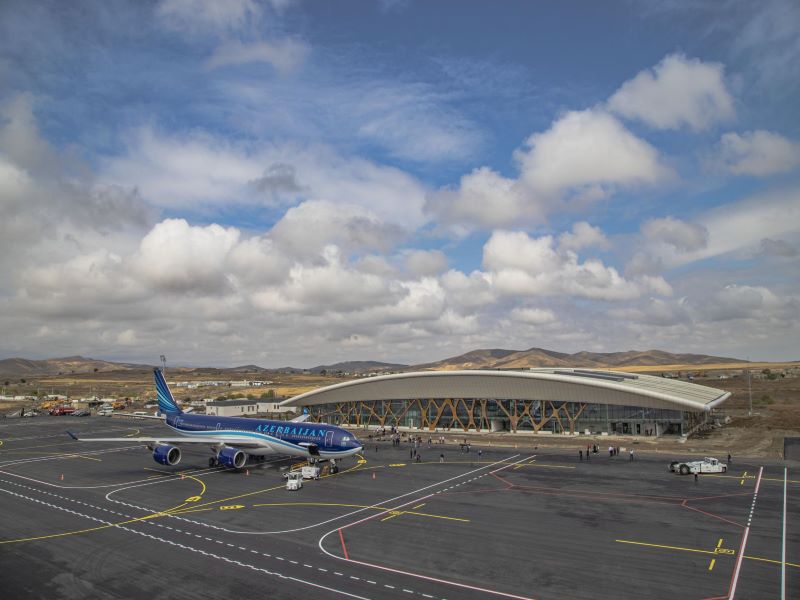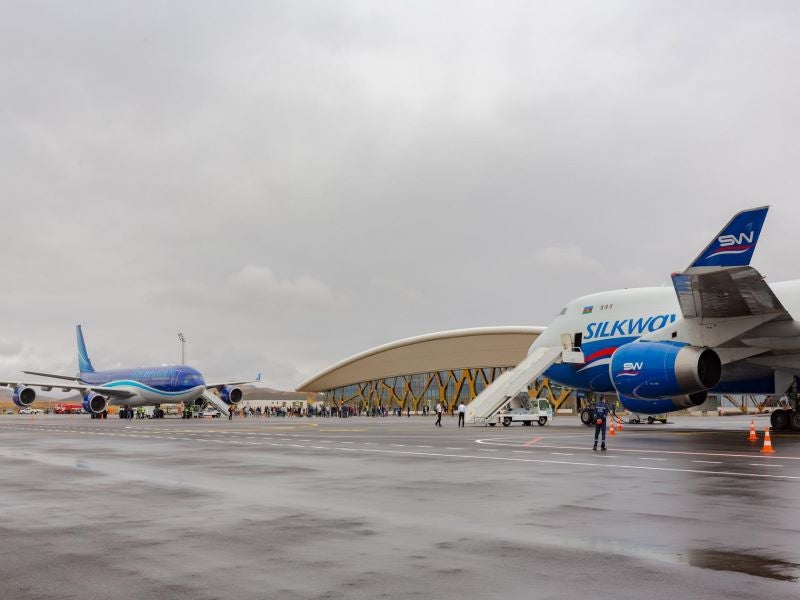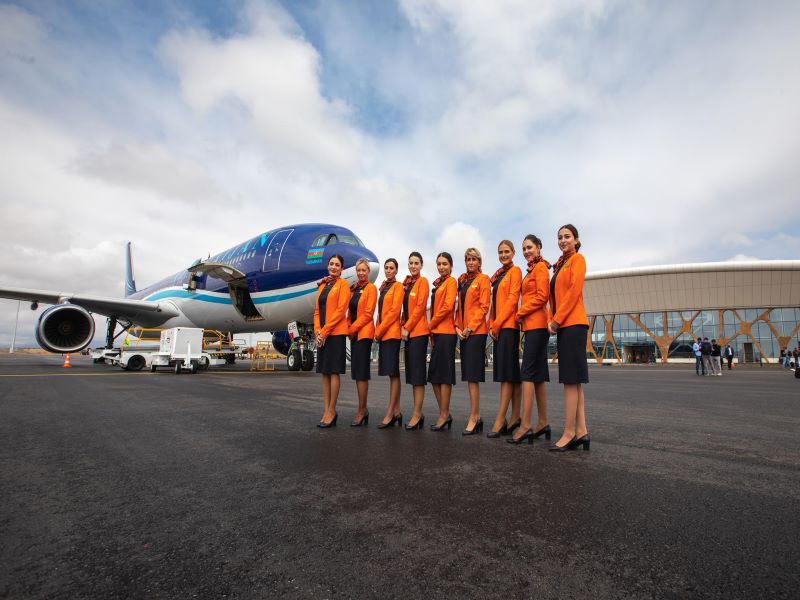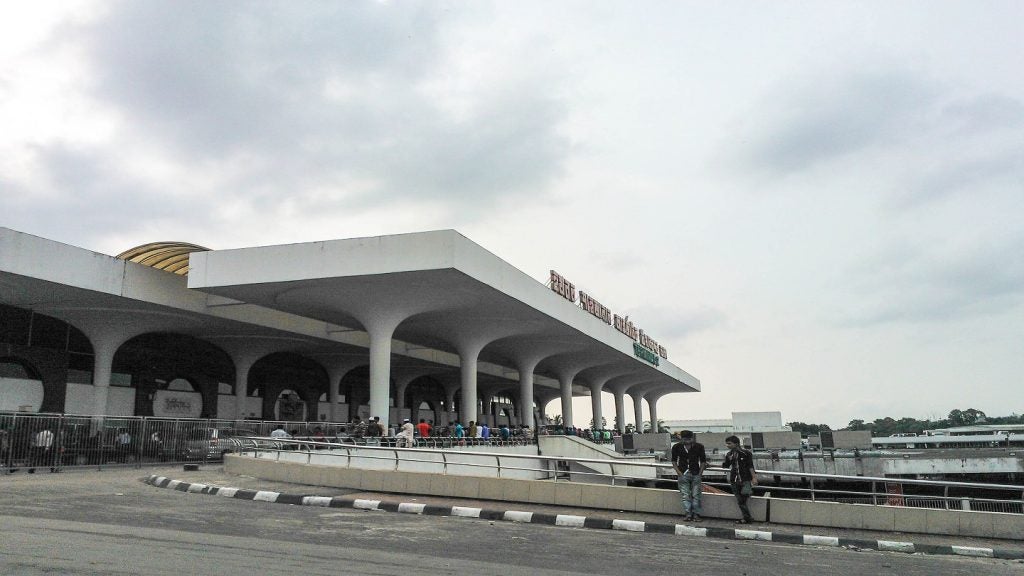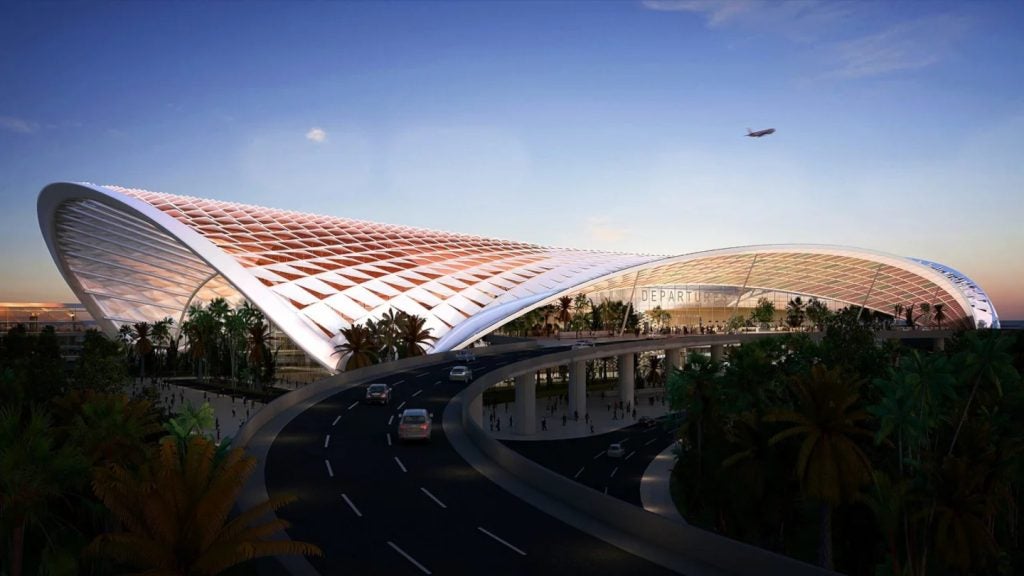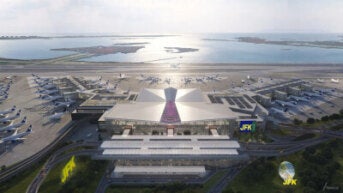The Fuzuli International Airport is located in Fuzuli city, in the Karabakh region of Azerbaijan. It is the first airport in the Karabakh region, which was recently liberated from Armenian occupation.
The airport will serve new international air routes, as part of the government’s efforts to gain complete control of the air navigation system and flights over the liberated territories.
The new international airport was inaugurated in the presence of President of the Republic of Azerbaijan Ilham Aliyev and President of the Republic of Turkey Recep Tayyip Erdogan, in October 2021.
The foundation stone for the Azerbaijani airport was laid in January 2021. An Airbus A340-500 passenger aircraft of flag carrier Azerbaijan Airlines landed at the airport in September 2021, marking the completion of the test flight between Baku and Fizul, in approximately 35 minutes.
On the same day, Azerbaijani private cargo carrier Silk Way Airlines conducted the first cargo transportation, onboard the Boeing 747-400 aeroplane, from Baku to the Fuzuli International Airport.
Built within eight months, the new international airport acts as Karabakh’s gateway to the world.
Fuzuli International Airport details
The Fuzuli airport features a single terminal with the capacity to handle 200 passengers an hour. Baggage conveyors, VIP lounges, a registration system, shops, restaurants, and other facilities have also been built as part of the project.
The airport has a 3,000m-long and 60m-wide runway, which is fitted with instrumental landing and navigation systems, lighting control, and radar systems, to ensure flight safety in line with the regulations set by the International Civil Aviation Organisation (ICAO).
The apron area spans 60,000m² (645,834.63ft²) while the taxiway is 6,360m² (68,458.47ft²). The airport can accommodate all types of aircraft.
To accommodate high volumes of cargo and passengers, the latest infrastructure is installed at the airport. A car parking lot, with 150 spaces is, located in front of the passenger terminal.
ATC system at Fuzuli International Airport
The Fuzuli airport features an air traffic control (ATC) tower equipped with automated systems. The ATC facility complies with international aviation and transportation standards.
The PHOENIX tower system was installed at the Fuzuli airport. It is a multi-radar, data processing, and air situation display system for ATC applications. The tower system also includes the latest generation hardware.
Ground-based VOR/DME navigation system
Azerbaijan Airlines installed the ground-based VHF omni-directional range/distance measuring equipment (VOR/DME) navigation system at the Fuzuli International Airport in July 2021, to enable aircraft flying over the region to receive radio call signals from the airport.
An aircraft from Azerbaijan Airlines became the first to receive those signals in the airspace over Karabakh. The radio call signs transmitted via the navigation system have been registered and approved by the European Organisation for the Safety of Air Navigation, which is commonly known as EUROCONTROL.
Radio technical equipment has been installed at the airport for the air navigation support of flights. Furthermore, a radar complex was established, and aviation and meteorological support systems were installed.
Contractors involved
AzVirt, a construction company based in Azerbaijan, was responsible for the construction of the Fuzuli International Airport.
The PHOENIX air situation system was provided by DFS Aviation Services (DAS), under a contract with Azeraeronavigatsiya (AZANS). DAS also provided training to technical and operational staff to operate the system.
Turkish firm DESK YAPI Contracting was selected to supply electrical and mechanical equipment for the project. It provided heating, ventilation, and air conditioning (HVAC), fire protection, building automation, a public address system, fire alarm, and plumbing systems.

